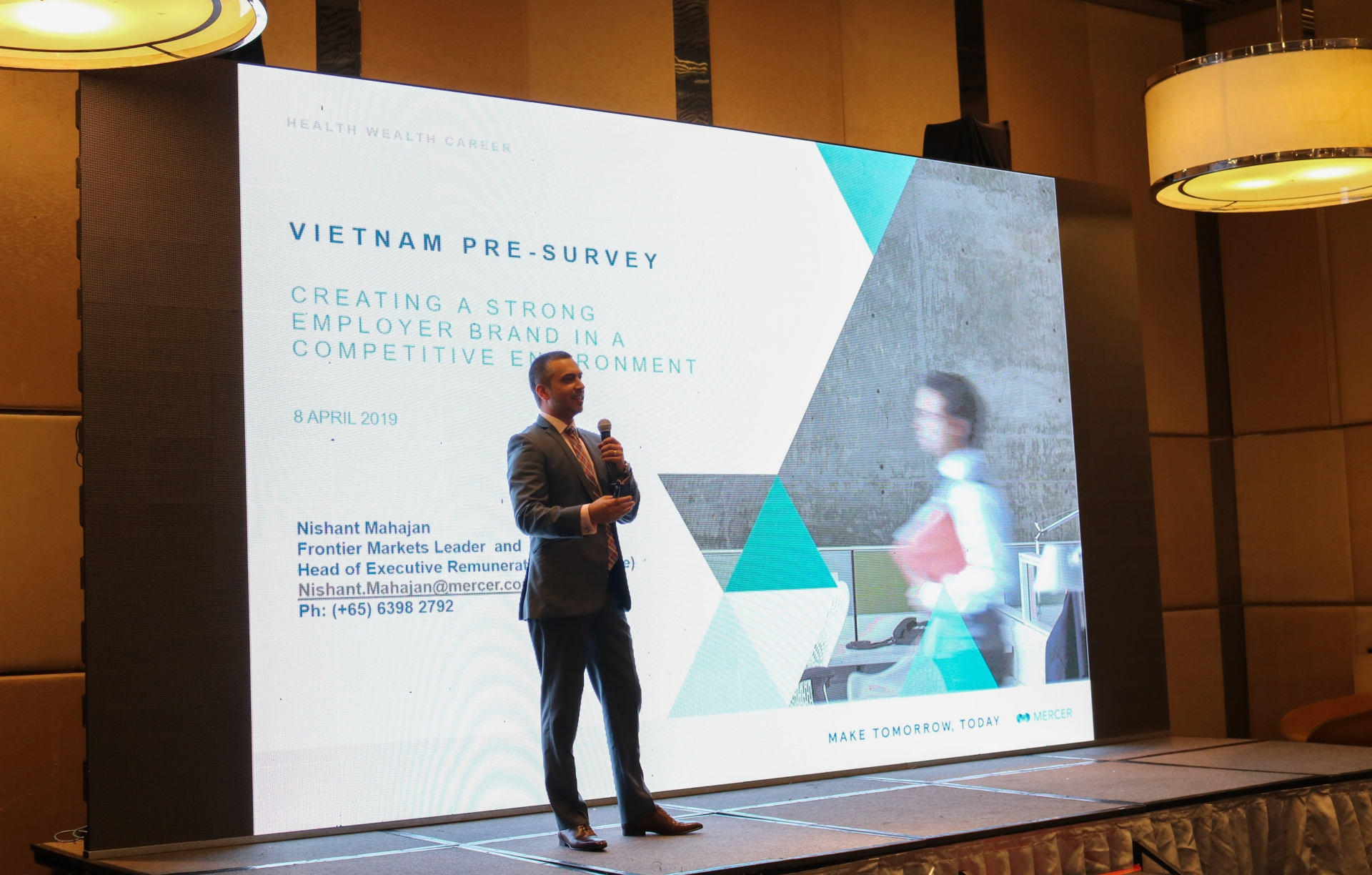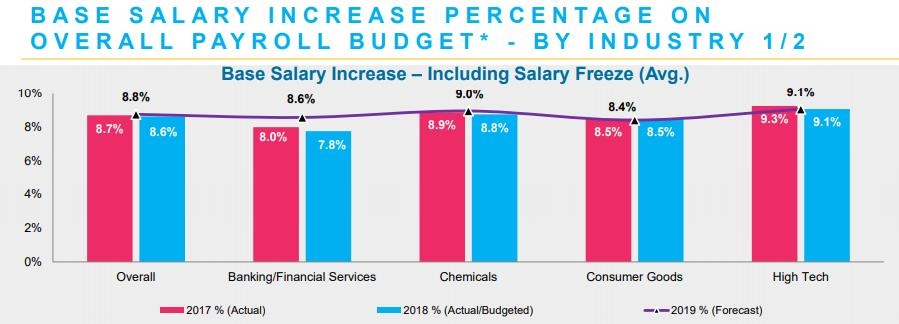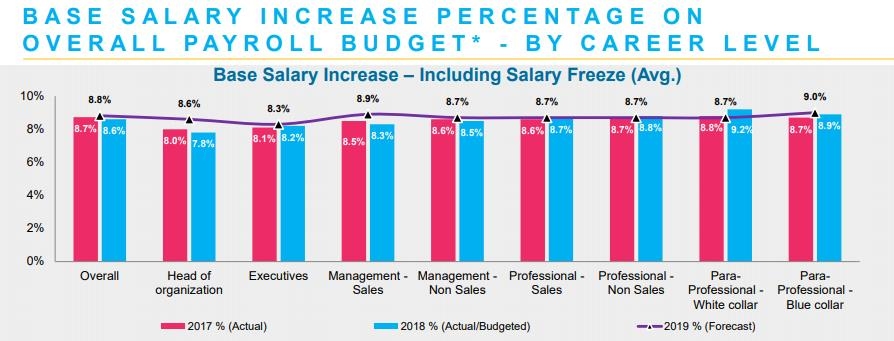Talentnet-Mercer Market Pulse Report reveals rising salary trends
 |
| The pre-survey seminar was held today in Ho Chi Minh City |
The report was released at today’s kick-off event, the pre-survey seminar in Ho Chi Minh City. With standardised methodology and up-to-date human resources trends, the Talentnet-Mercer Total Remuneration Survey (TRS) is a powerful reference tool for business leaders in the revision and improvement of human resources strategy relating to salary and remuneration within the Vietnamese market.
According to the report, the high-tech, life sciences, and chemicals industry will remain the three with the highest base salary increase rate, at 9.1, 9.1, and 9.0 per cent, respectively. Consistent with previous years’ results, these three industries remain some of the strongest-performing within the Vietnamese market.
The banking/financial service industry is forecasted to have a 0.8 per cent increase in base salary, with 8.6 per cent for 2019. In 2018, the bonus increase rate of companies in this industry was also on top among others in the market (25.4 per cent), thanks to the strong local and regional potential as well as their performance. This is a good sign for this industry in the near future, showing a highly promising room for expansion in the market.
 |
This year, management and executive levels seem to have a slight overall salary increase rate, while there is no significant change amongst professional levels. Similarly observed in variable bonus rates, head of organisation, and executive, and management levels have had their bonus rates increase higher than all other levels (at 21.3, 19, and 17.1 per cent, respectively). This is understandable – as key drivers of business profit and performance, managerial and leadership positions are motivated through variable bonus. On the other hand, para-professional and professional individuals prefer a more stable salary rate to ensure their secure daily life.
 |
One of the biggest concerns of this year’s report were the top reasons that caused employees to leave organisations. Lack of clear career path and low pay competitiveness stand equally at 47 per cent, whereas low pay competitiveness stood secondary to career path in previous years, in 2018, there is equal demand for both. This proves that employee demand is quickly shifting towards a balanced need between a stable career progression and equitable compensation for their effort.
To conclude, 2019 is forecast to be a promising year with businesses quickly adapting to the digital age. It is evident that businesses are slowly shifting towards a more methodical and sustainable people strategy approach. Strategies and tactics are being carried out to maximise performance. Of course, these tactics must be done with business goals in mind.
In order to make timely and accurate decisions regarding their employees, leaders must grasp the overall market picture through reliable data reference points, identify long term goals for the business, and organise business strategy in order to invest in the right people and right place. After all, the ultimate goal of all businesses is to create the highest amount of motivation for employees, in order to directly contribute to business performance.
What the stars mean:
★ Poor ★ ★ Promising ★★★ Good ★★★★ Very good ★★★★★ Exceptional
Related Contents
Latest News
More News
- Businesses ramp up production as year-end orders surge (December 30, 2025 | 10:05)
- Vietjet chairwoman awarded Labour Hero title (December 29, 2025 | 13:06)
- How to unlock ESG value through green innovation (December 29, 2025 | 10:03)
- AI reshapes media and advertising industry (December 29, 2025 | 08:33)
- FPT and GELEX sign deal to develop blockchain tech for global markets (December 29, 2025 | 08:29)
- Vietnam’s GDP forecast to grow by 9 per cent in 2026 (December 29, 2025 | 08:29)
- Women entrepreneurs are key to Vietnam’s economic growth (December 29, 2025 | 08:00)
- Vietnam's top 500 value-creating enterprises announced (December 27, 2025 | 08:00)
- The PAN Group shaping a better future with ESG strategy (December 26, 2025 | 09:00)
- Masan Consumer officially lists on HSX, marking the next phase of value creation (December 25, 2025 | 13:20)

 Tag:
Tag:





















 Mobile Version
Mobile Version